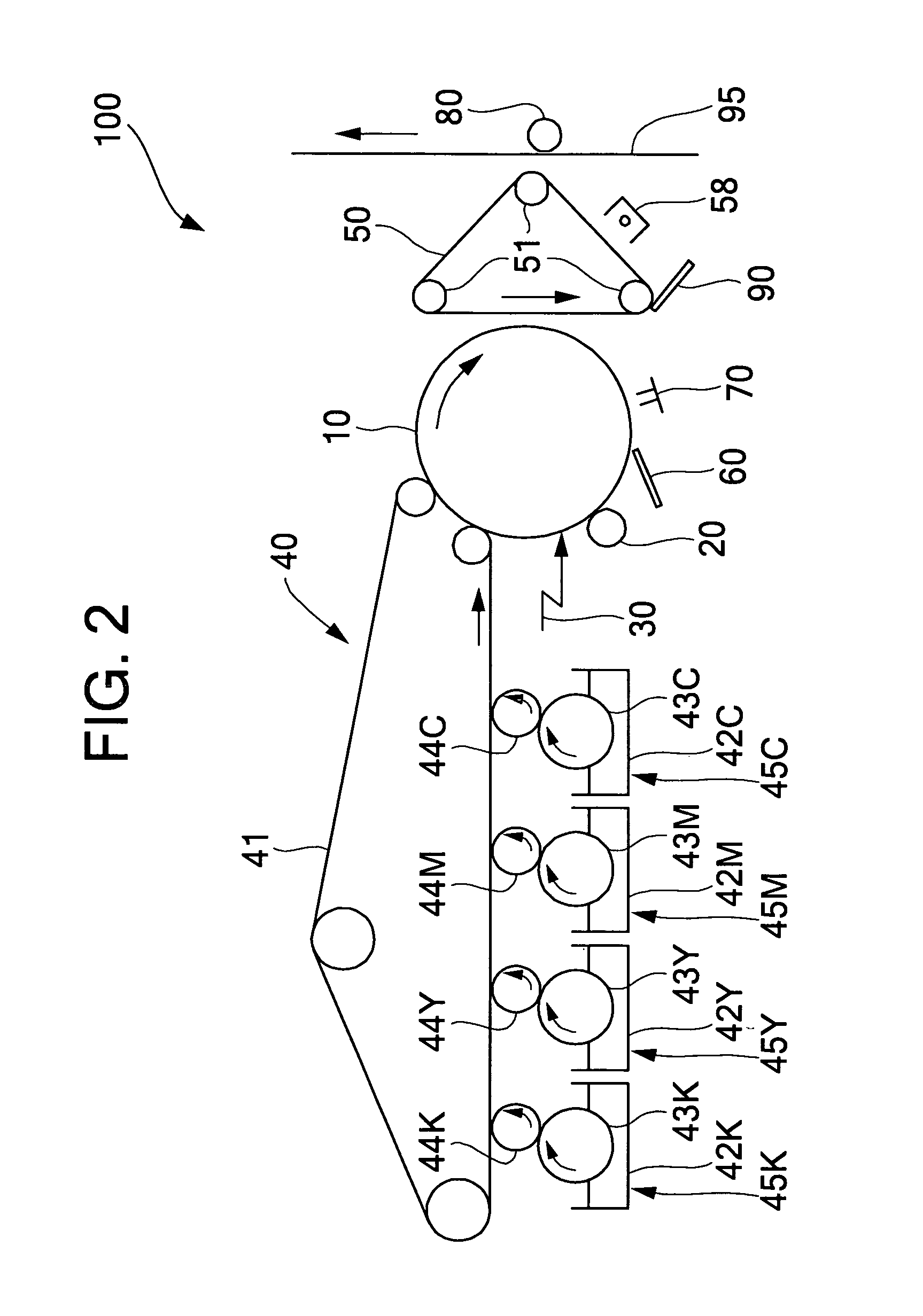Toner, developer, toner container, process cartridge, image forming apparatus, and image forming method using the same
a technology of toner container and process cartridge, which is applied in the field of toner, developer, toner container, process cartridge, image forming apparatus, and image forming method using the same, can solve the problems of low yield, limited materials that can be used for toner, and image creation of full-color copiers still not at a satisfactory level, etc., and achieves favorable transferability and cleaning ability. , the effect of high quality
- Summary
- Abstract
- Description
- Claims
- Application Information
AI Technical Summary
Benefits of technology
Problems solved by technology
Method used
Image
Examples
example 7
-Toner Preparation-
[0383]1 part of the external additive F was added to 100 parts of the “toner-base particle 1” and stirred by HENSCHEL MIXER at a circumferential velocity of 40 m / s for 10 minutes. Next, 0.5 parts of the external additive A and 0.5 parts of the external additive D were added to the mixture and stirred by HENSCHEL MIXER at a circumferential velocity of 60 m / s for 10 minutes. The coarse particles were then removed by sieving the fine particles produced after mixing through a sieve of 100 μm mesh to produce toner H of Example 7.
example 8
-Toner Preparation-
[0384]1 part of the external additive K was added to 100 parts of produced “toner-base particle 1” and stirred by HENSCHEL MIXER at a rotating speed of 40 m / s for 10 minutes. Next, 0.5 parts of the external additive J and 0.5 parts of the external additive D were added to the mixture and stirred by HENSCHEL MIXER at a rotating speed of 40 m / s for 10 minutes. The coarse particles were then removed by sieving the fine particles produced after mixing through a sieve with 100 μm mesh to produce toner I of Example 8.
example 9
-Toner Preparation-
[0385]One part of the external additive L was added to 100 parts of the “toner-base particle 1” and stirred by HENSCHEL MIXER at a circumferential velocity of 45 m / s for 10 minutes. Next, 1 part of the external additive B and 0.5 parts of the external additive C were added to the mixture and stirred by HENSCHEL MIXER at a circumferential velocity of 40 m / s for 10 minutes. The coarse particles were then removed by sieving the fine particles produced after mixing through a sieve of 100 μm mesh to produce toner J of Example 9.
PUM
 Login to View More
Login to View More Abstract
Description
Claims
Application Information
 Login to View More
Login to View More - R&D
- Intellectual Property
- Life Sciences
- Materials
- Tech Scout
- Unparalleled Data Quality
- Higher Quality Content
- 60% Fewer Hallucinations
Browse by: Latest US Patents, China's latest patents, Technical Efficacy Thesaurus, Application Domain, Technology Topic, Popular Technical Reports.
© 2025 PatSnap. All rights reserved.Legal|Privacy policy|Modern Slavery Act Transparency Statement|Sitemap|About US| Contact US: help@patsnap.com



